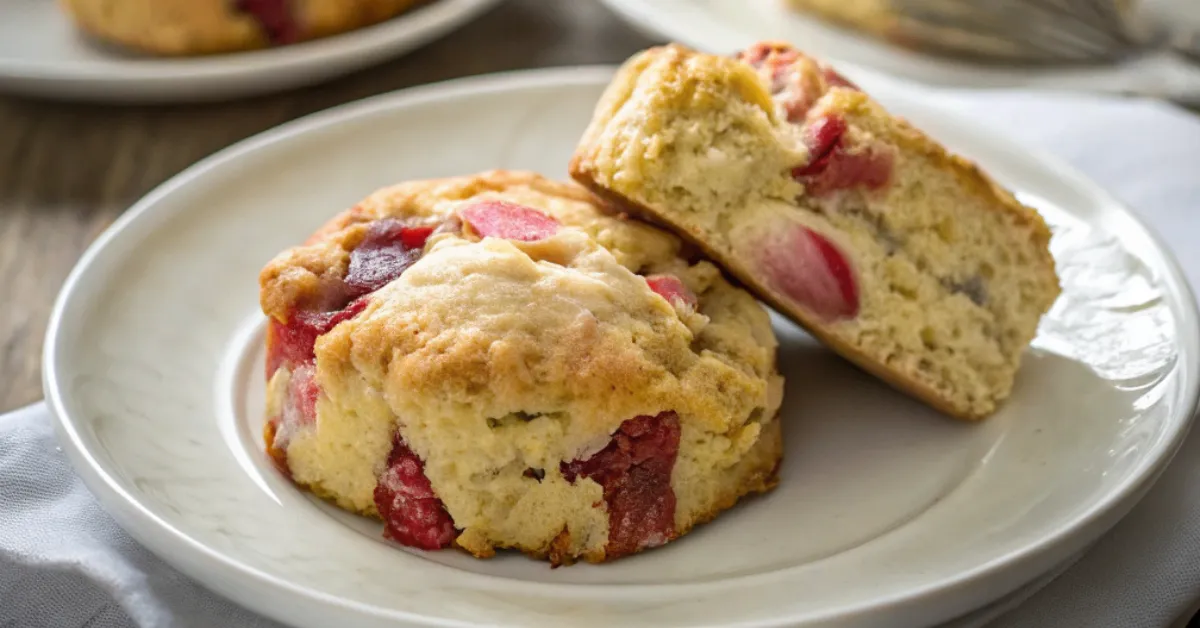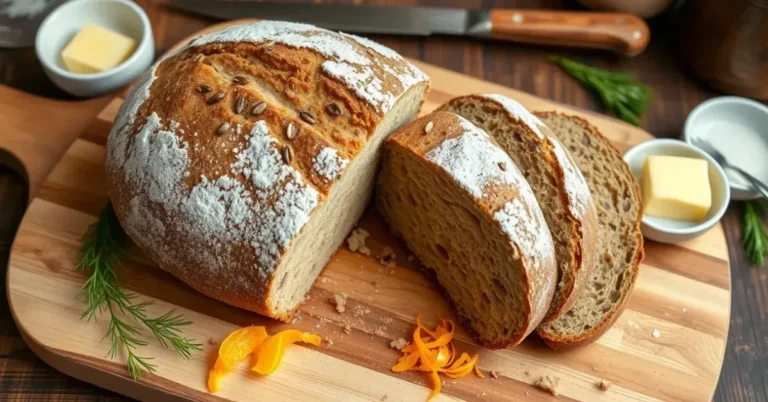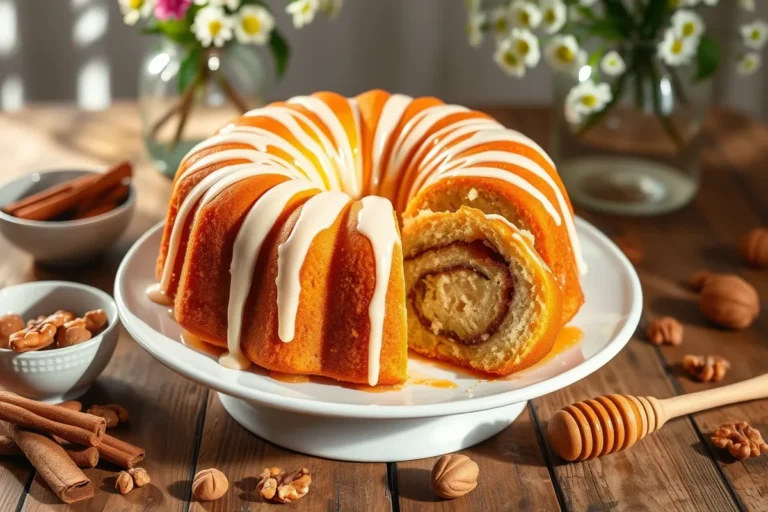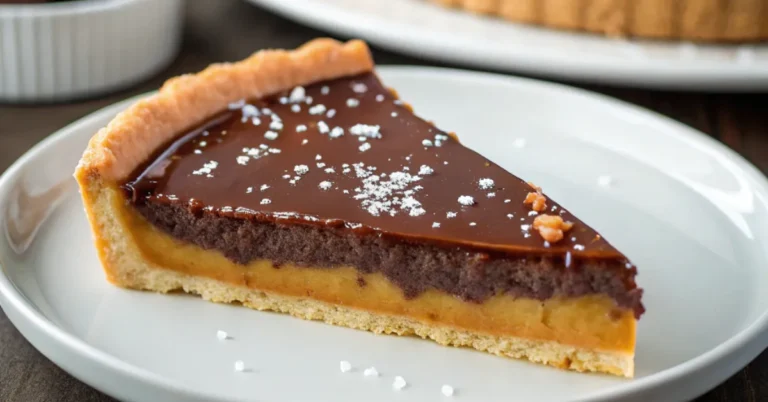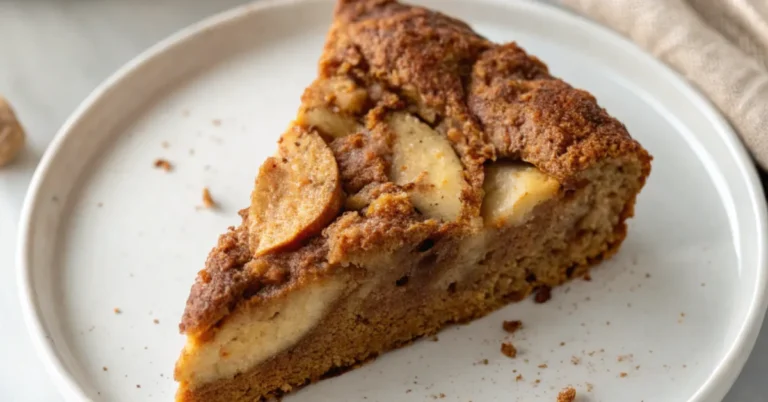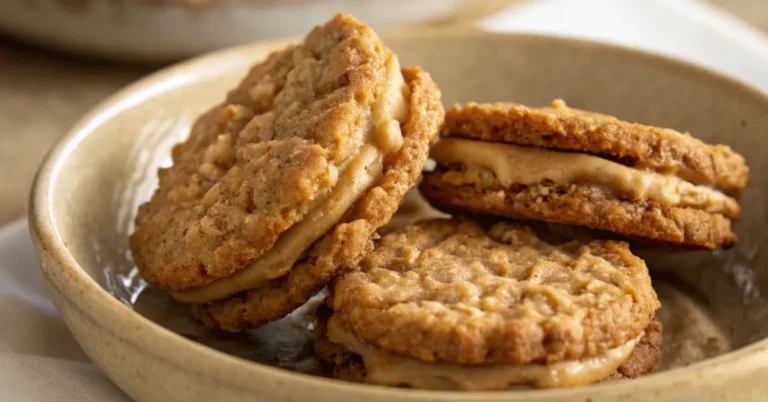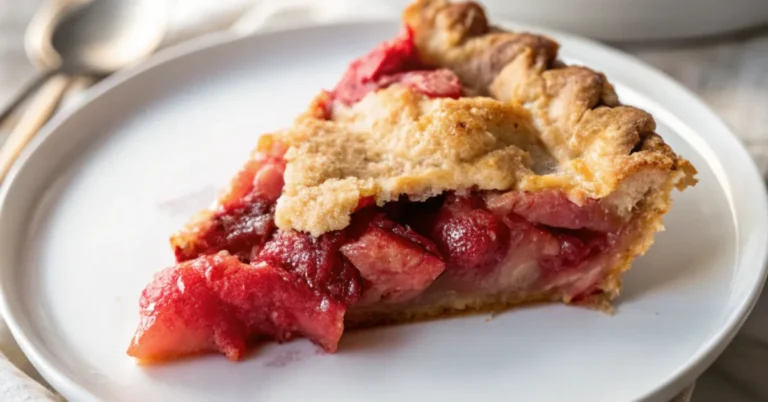Easy Rhubarb and Custard Scones Recipe for Beginners
When you’re craving something sweet and easy to make, there’s nothing quite like homemade scones. And when you add the tangy freshness of rhubarb and the creamy richness of custard to the mix, it turns an ordinary scone recipe into something extraordinary. Whether you’re new to baking or an experienced pro, this Easy Rhubarb and Custard Scones Recipe for Beginners is perfect for you.
These scones are not only easy to make but also packed with flavor that’s sure to delight your taste buds. If you’ve been on the lookout for a unique, simple, and delicious recipe to try, then this one is sure to become a favorite in your baking repertoire. Let’s dive into the world of rhubarb and custard scones and learn how to make them step by step!
Table of Contents
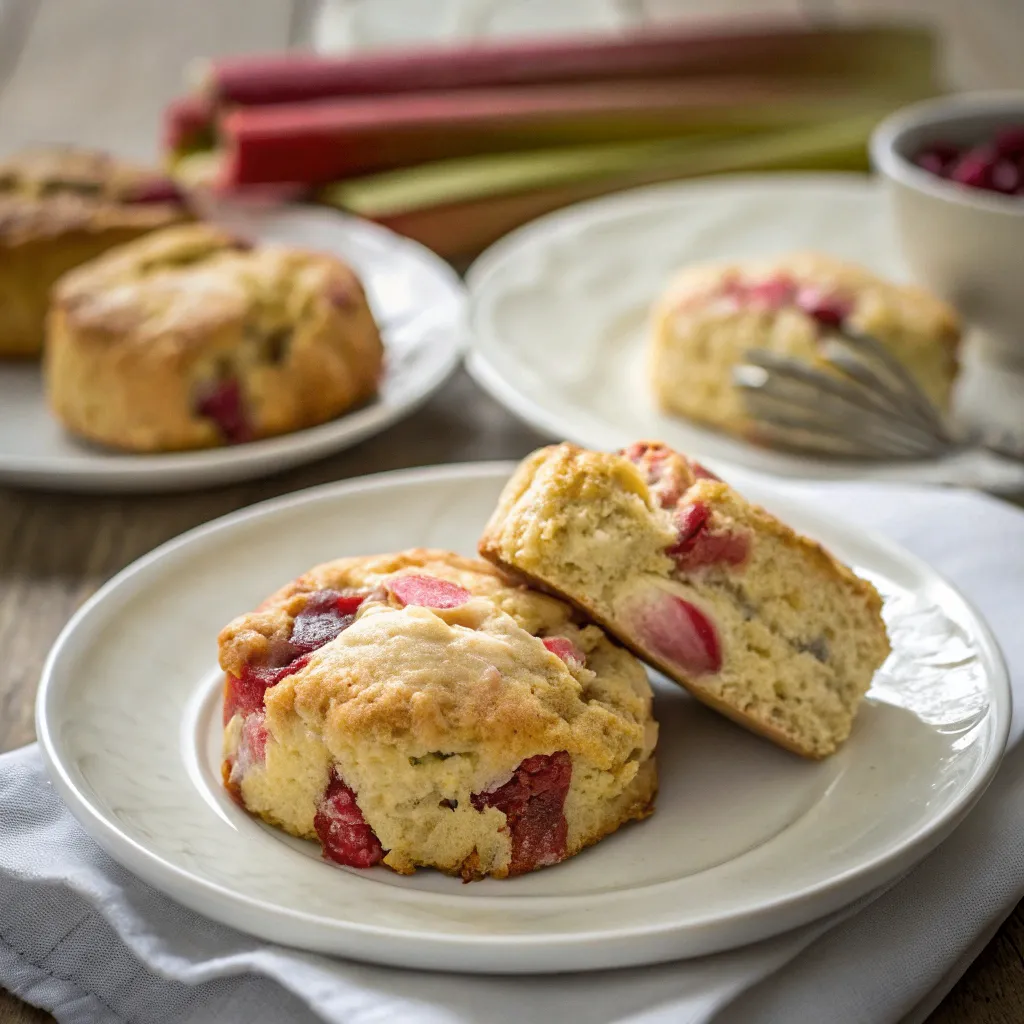
What is This Recipe?
This Easy Rhubarb and Custard Scones recipe combines the best of two worlds: the tart, slightly sour flavor of rhubarb and the creamy, sweet taste of custard. Scones are a classic treat, typically enjoyed with tea or coffee, and are known for their crumbly, slightly dense texture. By adding rhubarb and custard, you create a perfect balance of flavors that are both indulgent and refreshing.
These scones are perfect for breakfast, afternoon tea, or even as a special treat for gatherings. Best of all, the recipe is beginner-friendly, ensuring even novice bakers can create a batch of delicious, homemade scones with ease.
Essential Ingredients:
To make these mouthwatering Easy Rhubarb and Custard Scones, you’ll need the following ingredients:
- 250g self-raising flour (for a soft, fluffy texture)
- 100g unsalted butter (cold, for that classic scone flakiness)
- 75g sugar (adds sweetness)
- 1 large egg (for binding the dough)
- 1 tsp vanilla extract (adds a rich, aromatic flavor)
- 200ml heavy cream (for a creamy texture)
- 150g fresh rhubarb (cut into small pieces)
- 100g custard powder (to give that smooth custard flavor)
- Pinch of salt (to balance the sweetness)
Alternative Ingredients:
If you’re looking to customize the recipe or need substitutions, here are some alternatives you can use:
- Flour: You can substitute self-raising flour with plain flour and baking powder if needed.
- Butter: If you’re dairy-free, try using a plant-based butter or margarine.
- Sugar: For a healthier option, you can use coconut sugar, honey, or maple syrup in place of regular sugar.
- Cream: If you’re out of heavy cream, you can use milk or even yogurt for a lighter version.
- Rhubarb: In the absence of rhubarb, you can experiment with other fruits like strawberries or apples.
- Custard Powder: You can make your own custard by combining eggs, sugar, and milk, although custard powder gives a quick and easy option.
| Prep Time | Cook Time | Total Time | Servings | Yield |
|---|---|---|---|---|
| 15 minutes | 25 minutes | 40 minutes | 8-10 scones | 8-10 scones |
Key Features:
- Beginner-Friendly: This recipe is perfect for anyone who is just starting to bake.
- Minimal Ingredients: You don’t need complicated ingredients to make these delicious scones.
- Perfect for Any Occasion: These scones can be enjoyed as a breakfast treat, an afternoon snack, or even at a tea party.
- Flaky and Moist Texture: The combination of butter, cream, and custard makes these scones incredibly tender.
- Versatile: You can customize this recipe by swapping rhubarb with other fruits like strawberries or peaches.
Nutrition Facts (Per Serving):
| Nutrient | Amount |
|---|---|
| Calories | 210 |
| Protein | 2g |
| Carbs | 30g |
| Fat | 9g |
| Fiber | 1g |
| Sugar | 10g |
Note: These values are approximate and may vary depending on ingredient substitutions or portion sizes.
Directions: Step-by-Step Guide to Making Rhubarb and Custard Scones
Making scones may seem like a complex process, but with the right guidance, it’s a breeze. In this section, we’ll break down each step in detail, ensuring that you create the perfect Rhubarb and Custard Scones every time. Whether you’re a beginner or an experienced baker, following these clear instructions will help you achieve light, fluffy, and delicious scones with a balance of sweet custard and tangy rhubarb. Let’s get started!
Step 1: Preheat Your Oven
Before you start making the dough, it’s important to get your oven ready. Preheat your oven to 200°C (400°F). This will ensure that the oven is hot enough to create a nice rise and golden-brown crust on your scones as they bake.
To avoid any delays, it’s always a good idea to start preheating the oven before you begin mixing your ingredients. This way, when your dough is ready, the oven will be at the perfect temperature to bake your scones straight away.
Step 2: Prepare Your Baking Tray
Then, prepare a baking sheet by covering it with parchment paper or using a silicone baking mat. This prevents the scones from sticking and makes cleanup much easier. You don’t want your beautiful scones to stick to the pan, so lining it is a simple but crucial step.
If you don’t have parchment paper, you can lightly grease the baking sheet with butter or oil, but parchment paper works best for this recipe, as it creates a non-stick surface and allows the scones to rise evenly.
Step 3: Chop and Prepare the Rhubarb
Now, let’s prepare the rhubarb. Rhubarb is the star ingredient of this recipe, so it’s important to chop it properly to ensure it mixes well into the dough.
- Wash the Rhubarb: First, thoroughly rinse your rhubarb stalks under cold water to remove any dirt or debris.
- Trim the Ends: Use a sharp knife to cut off both ends of the rhubarb stalks.
- Chop into Small Pieces: Slice the rhubarb into small, even pieces—around 1 cm (1/2 inch) thick. The smaller the pieces, the easier they will be to fold into the dough, and they’ll also distribute more evenly throughout the scones.
After chopping, place the rhubarb pieces on a paper towel or clean kitchen towel to absorb any excess moisture. This step is important because rhubarb can release a lot of juice when it bakes. If the rhubarb is too wet, it can make your scones soggy, so blotting it dry ensures the right texture for your scones.
Step 4: Make the Dry Mixture
Now it’s time to start making the scone dough. In a spacious mixing bowl, whisk together the self-raising flour, sugar, and salt. These are your dry ingredients, and they provide the base structure for the scones.
- Sift the Flour: Sifting the flour helps to aerate it and prevents lumps. It also makes sure that your scones have a light, fluffy texture. Sifting is a simple but effective technique that ensures an even consistency in your dough.
- Add Sugar and Salt: The sugar adds sweetness, and the salt balances the flavors. Make sure both ingredients are evenly distributed by whisking the dry mixture.
Once the dry ingredients are well-mixed, you’re ready for the next step.
Step 5: Incorporate the Butter
Cold butter is key to making scones light and flaky, so make sure your butter is cold before using it. Cut the unsalted butter into small cubes and add it to the dry mixture.
- Rubbing In the Butter: Using your fingertips or a pastry cutter, rub the butter into the flour mixture. This process breaks down the butter into small crumbs, and the result is what gives scones their characteristic flaky texture.
- Aim for Breadcrumb Texture: You’ll want to continue rubbing the butter until the mixture resembles coarse breadcrumbs. This step is crucial for creating that signature scone texture. Don’t overwork the dough, as that can make the scones dense.
Step 6: Add Wet Ingredients
Once the butter is incorporated into the dry ingredients, it’s time to add the wet ingredients. In a separate bowl, crack the egg and lightly beat it. Add the heavy cream, vanilla extract, and custard powder to the egg and mix until well combined.
- Pour Wet Ingredients into Dry Mixture: Slowly pour the wet mixture into the dry ingredients and stir gently with a spoon or spatula. Mix just until the dough comes together, but don’t overwork it. Overmixing can result in dense, tough scones.
- Form the Dough: The dough should be soft but not too sticky. If it feels too dry, add a little more cream, a tablespoon at a time. If it’s too wet, add a bit more flour to bring it together.
Step 7: Add the Rhubarb
Now it’s time to fold in the prepared rhubarb. Gently fold the rhubarb pieces into the dough, making sure they are evenly distributed. Don’t overmix the dough—just fold until the rhubarb is incorporated.
At this point, you should see little pockets of rhubarb throughout the dough, but you don’t want to smash the pieces, as that can release excess moisture.
Step 8: Shape the Dough
Transfer the dough onto a lightly floured surface. With your hands, gently pat the dough into a disc about 2.5 cm (1 inch) thick. The dough should still be a bit shaggy, but it should hold together. Be careful not to handle the dough too much to avoid tough scones.
- Cut into Wedges: Use a sharp knife or a scone cutter to cut the dough into 8-10 wedges. If you prefer round scones, you can also use a circular cutter, but the wedge shape is classic for scones.
Step 9: Bake the Scones
Place the cut scones onto your prepared baking sheet, leaving some space between each one to allow for expansion. For a golden, shiny finish, brush the tops of the scones with a little cream or milk.
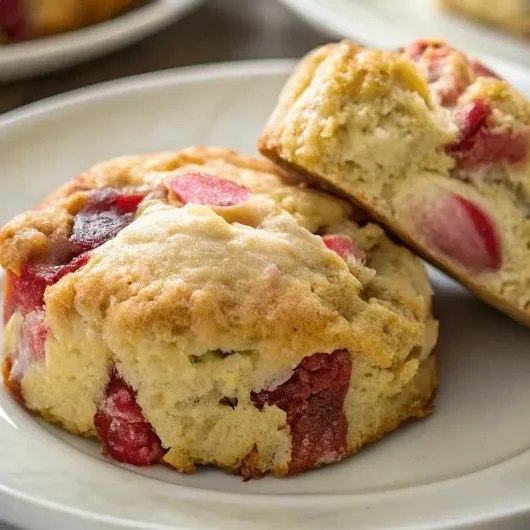
Step 10: Cool and Serve
Once your scones are baked, remove them from the oven and let them cool on a wire rack for a few minutes. Serve warm with clotted cream, butter, or jam for the ultimate treat.
These Rhubarb and Custard Scones are best enjoyed fresh from the oven, but they can also be stored in an airtight container for up to 2 days or frozen for longer storage.
Pro Tips for a Perfect Rhubarb and Custard Scone:
Making the perfect scone requires a little attention to detail, and these pro tips will help you ensure your Rhubarb and Custard Scones turn out light, fluffy, and delicious every time.
1. Use Cold Butter
Using cold butter is crucial for achieving that perfect, flaky texture in your scones. When you rub the butter into the flour, cold butter will create little pockets of fat within the dough. These pockets expand during baking, resulting in the soft, crumbly texture scones are known for. Make sure to cut the butter into small cubes and keep it chilled until you’re ready to use it.
2. Don’t Overwork the Dough
When combining the dough, handle it with care and refrain from overworking it. Overmixing activates the gluten in the flour, which can make your scones dense and tough. Stir the ingredients just enough to bring the dough together. If the dough feels a bit rough, that’s perfectly fine—it will come together as it bakes.
3. Keep the Dough Moist, Not Wet
The dough should be sufficiently moist to bind together, yet not overly sticky. If the dough feels too dry, add a small amount of heavy cream. If it’s too wet, sprinkle in a bit more flour. A good dough consistency helps ensure the scones rise beautifully and don’t spread out too much during baking.
4. Use Fresh Rhubarb
Fresh rhubarb gives the scones a crisp, tangy bite. If you use frozen rhubarb, make sure to thaw and drain it well to avoid excess moisture, which can make the scones soggy.
5. Chill the Dough (Optional)
If you have time, chill the dough for 10-15 minutes before baking. This helps the scones rise even higher and become lighter. Cold dough leads to a flakier scone, so it’s a great tip if you want to make sure your scones turn out perfectly.
Why You’ll Love This Recipe:
The Easy Rhubarb and Custard Scones recipe is perfect for anyone looking for a simple yet flavorful treat. The tangy rhubarb complements the rich, creamy custard perfectly, while the scones themselves are light, fluffy, and absolutely melt-in-your-mouth. Plus, it’s so easy to make, even if you’ve never baked before!
What Makes This Recipe Unique?
While traditional scones are delicious, adding rhubarb and custard gives this recipe a unique twist. The custard powder adds a smooth, creamy flavor that pairs beautifully with the rhubarb’s tartness. It’s a fresh and modern take on the classic scone, and you’ll find it hard to go back to plain scones once you try this recipe!
Frequently Asked Questions (FAQs)
- Can I make these scones ahead of time? Yes, you can prepare the scones the night before, cut them into wedges, and store them in the fridge. Just bake them fresh in the morning!
- Can I freeze these scones? Absolutely! After baking, let the scones cool completely, then freeze them in an airtight container for up to 3 months. To enjoy, simply reheat in the oven for 5-10 minutes.
- Can I use frozen rhubarb? While fresh rhubarb is best, you can use frozen rhubarb. Just make sure to thaw and drain the excess moisture before adding it to the dough.
You’ll Also Love:
If you enjoy this Easy Rhubarb and Custard Scones recipe, you might also love these other delightful baked goods:
- Lemon Blueberry Muffins
- Apple Cinnamon Tea Cakes
- Raspberry Almond Croissants
- Orange Zest Scones
Conclusion:
With its easy steps and mouthwatering flavor, the Easy Rhubarb and Custard Scones Recipe for Beginners is perfect for anyone looking to impress with minimal effort. Whether you’re a seasoned baker or just starting, this recipe is sure to become a go-to in your baking rotation. Don’t forget to share your creations with #BeesRecipes on Instagram. We can’t wait to see your delicious take on this sweet, tangy treat!

Easy Rhubarb and Custard Scones Recipe for Beginners
Ingredients
- Self-raising flour: 2 cups
- Granulated sugar: 2 tablespoons
- Salt: 1/4 teaspoon
- Cold unsalted butter: 1/2 cup cubed
- Custard powder: 2 tablespoons
- Heavy cream: 3/4 cup
- Egg: 1 beaten
- Fresh rhubarb: 1/2 cup chopped into small pieces
- Vanilla extract: 1 teaspoon
Instructions
- Preheat oven to 200°C (400°F) and line a baking sheet with parchment paper.
- Combine dry ingredients: In a large mixing bowl, sift the self-raising flour, sugar, and salt. Add the custard powder and mix well.
- Incorporate butter: Add the cubed cold butter to the dry mixture and use your fingertips or a pastry cutter to rub the butter into the flour until the mixture resembles breadcrumbs.
- Add wet ingredients: In a separate bowl, whisk together the cream, egg, and vanilla extract. Pour this into the dry mixture and stir gently until a dough forms.
- Fold in rhubarb: Gently fold the chopped rhubarb into the dough without overworking it.
- Shape the dough: Turn the dough onto a lightly floured surface and pat it into a 1-inch thick circle. Use a sharp knife to cut the dough into 8 wedges.
- Bake the scones: Transfer the scones to the prepared baking sheet. Brush the tops with a little extra cream or milk for a golden finish. Bake for 20-25 minutes, or until golden brown.
- Cool and serve: Let the scones cool on a wire rack for a few minutes before serving. Enjoy them warm with clotted cream or jam.
Notes
Equipment:
- Mixing bowl
- Pastry cutter or fork
- Sharp knife or scone cutter
- Baking tray
- Parchment paper or silicone baking mat
Nutrition (per serving):
- Calories: 220 kcal
- Total Fat: 10g
- Saturated Fat: 6g
- Cholesterol: 35mg
- Sodium: 200mg
- Carbohydrates: 28g
- Fiber: 1g
- Sugar: 8g
- Protein: 3g
Notes:
- Storage: These scones are best eaten fresh but can be stored in an airtight container for up to 2 days. You can also freeze them for longer storage.
- Customizations: If you prefer a sweeter scone, you can increase the sugar amount. You can also substitute the rhubarb with other fruits like strawberries or blueberries.
There are no reviews yet. Be the first one to write one.

